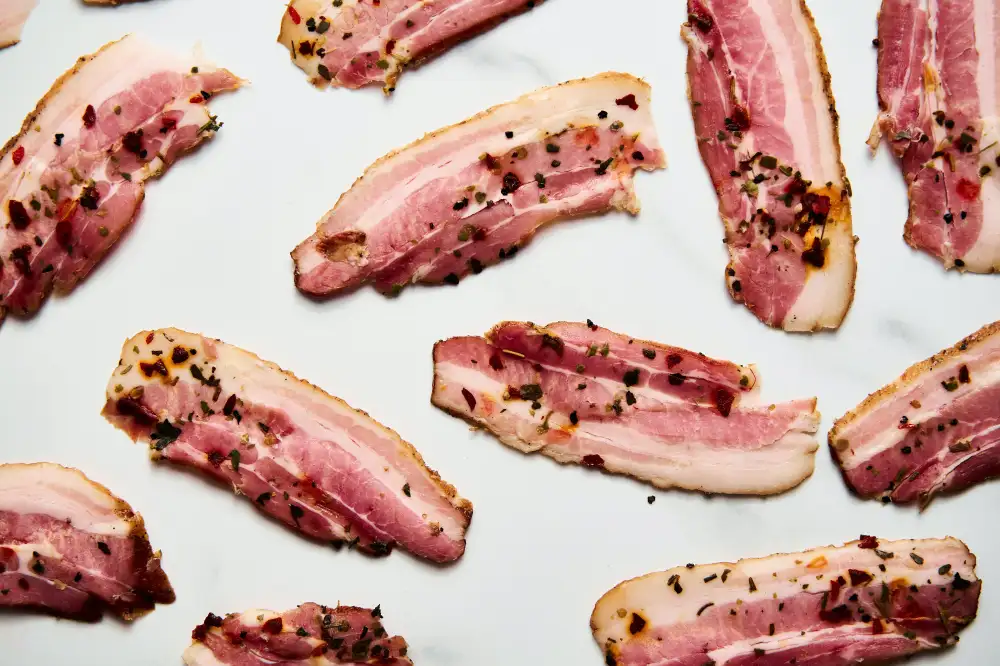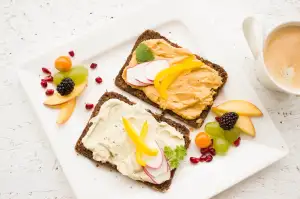Indulge in Majestic Delights: Unveiling the Exquisite Coronation Food Fit for Royalty

- Historical Significance of Coronation Food
- Traditional Dishes Served at Coronations
- Regional Variations in Coronation Food
- Modern Adaptations of Coronation Food
- Popular Ingredients Used in Coronation Food
- Etiquette and Protocol Surrounding Coronation Food
- The Role of Coronation Food in Celebrating Monarchy
Coronation food is a sumptuous feast fit for royalty, served during the crowning ceremony of a monarch. It is a celebration of tradition, culture, and culinary excellence that has been passed down through generations. This regal affair showcases the finest dishes prepared with precision and elegance, designed to tantalize the taste buds and leave a lasting impression on all who partake in it. From elaborate banquets to intimate gatherings, coronation food embodies the opulence and grandeur associated with royal events. Join us as we delve into the world of coronation food and uncover its exquisite delights.
Historical Significance of Coronation Food
The historical significance of Coronation food dates back centuries, symbolizing the grandeur and power of monarchies. It serves as a tangible representation of the royal lineage and the continuity of the monarchy. The elaborate feasts held during coronations were not only a celebration of the new monarch's ascension to power but also an opportunity to showcase the wealth and prosperity of the kingdom. These sumptuous banquets were meant to impress foreign dignitaries, nobles, and commoners alike, solidifying the monarch's authority and prestige. The carefully curated menu reflected the cultural heritage and culinary traditions of the kingdom, making it a memorable event for all attendees. Through Coronation food, history comes alive, offering us a glimpse into the opulence and splendor that surrounded these momentous occasions.
Traditional Dishes Served at Coronations
Coronations have long been associated with grand feasts, showcasing the culinary prowess of the host nation. Traditional dishes served at coronations are steeped in history and reflect the cultural heritage of the reigning monarch. One such dish is the coronation chicken, which was first created for Queen Elizabeth II's coronation in 1953.
Coronation chicken is a rich and flavorful dish made with cooked chicken, mixed with a creamy sauce infused with curry powder, apricot puree, and mayonnaise. It is often garnished with almonds and served cold. This dish quickly became a favorite among the British population and has since become synonymous with coronation celebrations.
Another popular traditional dish served at coronations is roasted meats, particularly beef or lamb. These meats are often cooked to perfection, seasoned with aromatic herbs and spices, and accompanied by rich gravies or sauces. Roasted vegetables such as potatoes, carrots, and parsnips are also commonly served alongside.
In addition to meat dishes, traditional coronation feasts feature an array of side dishes including savory pies filled with game or vegetables, hearty soups like turtle soup or consommé, and delicate seafood platters featuring oysters or smoked salmon.
To satisfy sweet cravings, elaborate desserts take center stage at coronation banquets. Fruit-based desserts like summer pudding or trifle are often served alongside indulgent creations like chocolate mousse cake or bread pudding soaked in brandy.
These traditional dishes not only showcase the culinary traditions of the host nation but also serve as a symbol of opulence and abundance during these momentous occasions. They provide a feast fit for royalty and leave guests in awe of the exquisite flavors that define coronation cuisine.
Regional Variations in Coronation Food
Just as the monarchy itself varies from country to country, so does the culinary heritage of coronation food. Each region adds its own unique flavors and traditions to the grand feast fit for royalty.
In England, for example, a traditional coronation menu often includes dishes such as roasted meats like beef or lamb, accompanied by rich gravies and Yorkshire pudding. The English also have a fondness for savory pies filled with game birds or venison, which are often served as part of the coronation feast.
In France, coronation food takes on a more elegant and refined tone. Classic French dishes like Coq au Vin (chicken braised in red wine), Escargots de Bourgogne (snails cooked in garlic butter), and Crème Brûlée are commonly found on the menu. These delicate and intricate dishes showcase the French culinary expertise that has long been associated with their monarchy.
Moving across to Asia, India boasts its own vibrant take on coronation food. Traditional Indian dishes such as Biryani (a fragrant rice dish cooked with meat or vegetables), Butter Chicken (succulent chicken simmered in a creamy tomato-based sauce), and Gulab Jamun (sweet dumplings soaked in sugar syrup) are often featured during royal celebrations. The use of aromatic spices and bold flavors is characteristic of Indian cuisine and adds an exotic touch to the coronation feast.
The Middle East also has its own regional variations when it comes to coronation food. In countries like Saudi Arabia and Qatar, traditional dishes like Mansaf (a lamb dish cooked with yogurt sauce) and Kabsa (spiced rice with meat) are popular choices for royal banquets. These hearty and flavorful dishes reflect the rich culinary traditions of the Arabian Peninsula.
From Europe to Asia, each region brings its own distinct flavors to the table when it comes to coronation food. These regional variations not only showcase the diversity of culinary traditions but also highlight the cultural significance and pride associated with celebrating monarchy through food.
Modern Adaptations of Coronation Food
Modern adaptations of coronation food have breathed new life into traditional dishes, infusing them with contemporary flavors and techniques. Chefs around the world have taken inspiration from the rich culinary heritage of coronations and put their own unique spin on these regal feasts.
One popular modern adaptation is the use of fusion cuisine, combining traditional British ingredients with flavors from different cultures. For example, a coronation chicken curry has become a beloved dish, featuring succulent chicken in a creamy sauce infused with aromatic spices like cumin and coriander.
Another modern twist is the incorporation of healthier ingredients and cooking methods. Chefs are now using lighter oils and reducing the amount of cream and butter traditionally used in coronation dishes. This allows for a more balanced and nutritious meal without compromising on taste.
Furthermore, there has been an increased emphasis on vegetarian and vegan options in modern coronation food. Plant-based alternatives to meat are being used to create innovative dishes that cater to diverse dietary preferences while still capturing the essence of regal indulgence.
In addition to these adaptations, chefs are also experimenting with presentation techniques to create visually stunning dishes. The use of edible flowers, intricate garnishes, and artistic plating adds an element of elegance to the dining experience fit for royalty.
These modern adaptations not only showcase the creativity and talent of chefs but also make coronation food more accessible to a wider audience. By blending tradition with innovation, these dishes continue to evolve while paying homage to their historical roots.
Popular Ingredients Used in Coronation Food
Coronation food is known for its opulence and grandeur, and the use of exquisite ingredients plays a crucial role in creating these majestic dishes fit for royalty. Some of the popular ingredients used in coronation food include:
1. Saffron: This precious spice adds a vibrant golden hue and a delicate floral aroma to many coronation dishes. It is often used to flavor rice, curries, and desserts.
2. Game Meats: Venison, pheasant, and quail are commonly served at coronations due to their association with hunting traditions. These meats are prized for their rich flavors and tender textures.
3. Truffles: Highly prized for their earthy and intense flavor, truffles are often incorporated into sauces, soups, and savory pastries served during coronations.
4. Foie Gras: This luxurious ingredient made from fattened duck or goose liver is considered a delicacy in coronation cuisine. It adds a rich, buttery texture and depth of flavor to various dishes.
5. Caviar: The indulgent addition of caviar brings a burst of briny flavor to canapés and hors d'oeuvres served at coronations. Its smooth texture and distinctive taste make it an extravagant choice.
6. Champagne: As a symbol of celebration and luxury, champagne is often used to create refreshing cocktails or as an accompaniment to toast the newly crowned monarch during coronation feasts.
These ingredients not only elevate the taste profiles but also showcase the wealth and prestige associated with royal events like coronations. Their inclusion reflects centuries-old culinary traditions that have been passed down through generations, ensuring that each dish remains truly regal in every bite.
Etiquette and Protocol Surrounding Coronation Food
Etiquette and protocol play a vital role in the serving and consumption of coronation food. The dining experience during a coronation is steeped in tradition and follows strict guidelines.
One important aspect of etiquette is the order of service. The dishes are served in a specific sequence, starting with lighter courses such as soups or salads, followed by main courses, and ending with desserts. This ensures that guests can savor each dish without feeling overwhelmed.
Another key element is the use of proper table manners. Guests are expected to use utensils correctly, keeping their elbows off the table, and maintaining good posture. It is also customary to wait for the host or hostess to begin eating before guests start their meal.
Furthermore, seating arrangements are carefully planned to reflect hierarchy and status. VIPs and dignitaries are seated closest to the monarch, while other guests are placed according to their rank or importance. The seating plan is meticulously organized to ensure a harmonious atmosphere during the event.
In addition, there are specific rules regarding conversation at the dining table. It is considered impolite to discuss controversial topics or engage in heated debates during a formal meal. Instead, light-hearted conversations about art, culture, or current events are encouraged.
Lastly, it is essential for guests to pace themselves when enjoying coronation food. The portions served may be generous, but it is important not to overindulge or waste any food. Guests should take small bites and savor each dish while engaging in polite conversation with fellow diners.
Overall, observing proper etiquette and protocol enhances the regal ambiance of a coronation feast. It demonstrates respect for tradition and honors the significance of this grand occasion. By adhering to these customs, guests can fully appreciate the majesty of coronation food while paying homage to centuries-old traditions.
The Role of Coronation Food in Celebrating Monarchy
The role of coronation food in celebrating monarchy is deeply rooted in tradition and symbolism. It serves as a way to honor the new monarch and mark the beginning of their reign. The lavishness and grandeur of the food reflect the importance and significance of the occasion, showcasing the wealth and power of the monarchy. Through carefully curated menus, coronation food highlights the culinary heritage of the country, showcasing traditional dishes and ingredients that are unique to its culture. It also serves as a means to unite the nation, bringing people together to celebrate and show their support for their new ruler. Overall, coronation food plays a vital role in upholding royal traditions and creating a sense of unity and pride among the people.
In conclusion, the rich culinary heritage of coronation food offers a fascinating glimpse into the traditions and customs of royalty. From ancient times to modern adaptations, these exquisite dishes have played a significant role in celebrating monarchy and honoring the new ruler. With regional variations and popular ingredients, coronation food reflects the diverse cultures and flavors of different countries. As we indulge in these majestic delights, we not only savor the exquisite flavors but also pay homage to centuries-old traditions that continue to captivate our senses. Discovering the world of coronation food is truly a feast for both the palate and the imagination.
Published: 13. 02. 2024
Category: Home



